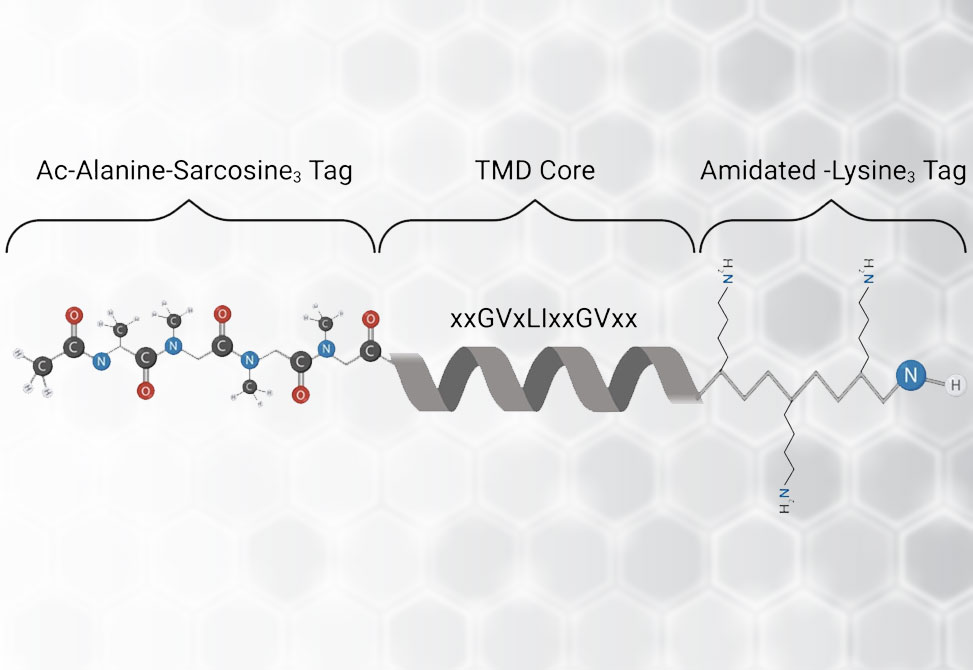Novel, Rational Drug Design
Reflecting work in the Deber
As an alternative approach to conventional antibiotics, members of the Charles Deber laboratory, published in Peptide Science, explore a novel, rational drug design to target a resistance mechanism in antibiotic-resistant bacteria—the small multidrug resistance, SMR, efflux pump.
SMRs are a membrane protein that consist of four transmembrane, TM, helices, which homodimerize via TM4 in an anti-parallel fashion through a GG7 motif. To target this interaction, group members synthesized a series of peptides, typified by Ac-A-(Sar)3-IIGMMLISAGVLI-KKK-NH2, Sar = N-methyl-glycine, GG7 underlined, with a sequence derived from Escherichia coli TM4, designed to bind to – and competitively disrupt – the TM4–TM4 interaction site. The peptides also contain an uncharged N-terminal sarcosine (N-methyl-glycine) tag to promote membrane insertion, and a C-terminal tri-lysine tag to direct the peptides toward the negatively-charged bacterial membrane.
As the lab members found that the GG7 dimerization motif was highly conserved across bacterial species, including a range of priority pathogens, the peptides were tested for interspecies inhibitory activity where they varied the SMR overexpressed in E. coli bacterium and the peptide. The peptides included the TM4 sequence of E. coli, EmrE, Pseudomonas aeruginosa, PAsmr, and Mycobacterium tuberculosis, Mmr.
The group performed a series of assays measuring the efflux rates of the fluorescent toxin ethidium bromide, finding that the PAsmr peptide was broadly active against all SMRs expressed in E. coli. Interestingly, a peptide derived from E. coli TM4, but where the GG7 motif was scrambled, showed high activity against several SMRs.
Overall, the efflux inhibitors designed in this work show promise not only for improved treatment of bacterial infections, but more generally, may provide a successful approach to targeting and disrupting membrane-embedded protein–protein interactions.


